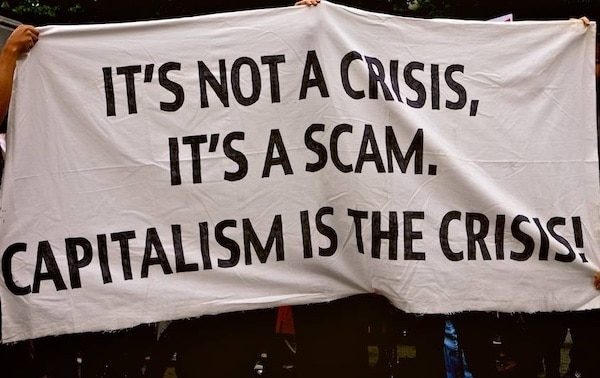
‘if God the Father had created things by naming them, Elstir recreated them by removing their names, or by giving them another name’.
Marcel Proust (II, 566)
An emerging consensus originated in the US has declared 2022 as the year of the ‘Polycrisis’, with a view to marking the beginning of an era of turbulence and unrest in the global economy. Under this conceptualisation, recent events including the Covid-19 pandemic, climate change catastrophes, the Russian invasion of Ukraine and the rise in energy and food prices are generally postulated as separate crises, which can have an effect on each other but nevertheless have separate origins. This centrifugal analysis of events predicates on the decline of the uni-polar world order, as well as acknowledging the emergent structural weaknesses in the traditional western powers; all of which can be loosely interpreted as occurring in a period during which power is dispersing and perhaps as a consequence of this dispersion, the current drivers of crisis have multiplied, leading to a multitude of crises, in contrast to preceding historical instances.
In spite of the current use of the term, the origins of the Polycrisis date further and can be more sparsely contextualised. However, there is no doubt that it has now become an important neologism for conventional western media and policy institutes, especially adopted by Bretton Woods Institutions, as well as other leading investors.
Civil society has also used this term as a neat summary, however, theirs is a critical response and is not interchangeable with how powerful International Financial Institutions (IFIs), policy think-tanks and investors use the term. In this sense, the instrumentalisation of this neologism, seems to have more value than its meaning, with the discernible possibility that any perceived political mileage of the Polycrisis, is a complete transformation away from its intellectual roots. Nonetheless, as an artefact, the intellectual roots and the political role of the Polycrisis merits an integrated analysis beyond its instrumentalisation.
A remarkable feature of liberal thought is the tendency towards identification of social phenomena through the selective elevation of their key distinguishing features, which are abstract enough to form ‘systems’ and neutral enough to subsume the inherent contradictions of capitalist development. Pandemics, climate breakdown, wars and global deflationary pressures are not mere externalities of the capitalist system but intrinsic to its operations- long predicted by a diverse group of thinkers. That these events converge in time is a political outcome, subject to planetary limits, not abstract systemisation, as the Polycrisis seems to imply.
Critical responses to the Polycrisis have pointed towards its disregard in accounting for the long and sustained crisis of the capitalist world order and a resort towards ‘brute empiricism’ to conceptualise things as they appear to be, rather than questioning what is occurring beneath mere appearances. Prima-facie accounts often seek to capture the zeitgeist in the endeavour to simplify things. However, there is a need to differentiate between simplification and reductionism. As a concept, the Polycrisis is simultaneously all-encompassing as well as abstract.
In an attempt to grasp both these aspects, this short blog starts with a focus on three messages of the Polycrisis: a) the qualitative nature of change, b) the drivers or causes of crises and c) the role of Bretton Woods Institutions in adopting the concept. In addition, the blog proposes an alternative way of understanding the contemporary crisis, which hinges on the decline of the western capitalist model, followed by some thoughts on multipolarity and geopolitics.
Read More »




 The eclipse of neoliberalism in 2000s coincided with the so-called
The eclipse of neoliberalism in 2000s coincided with the so-called 
 Source:
Source: 
